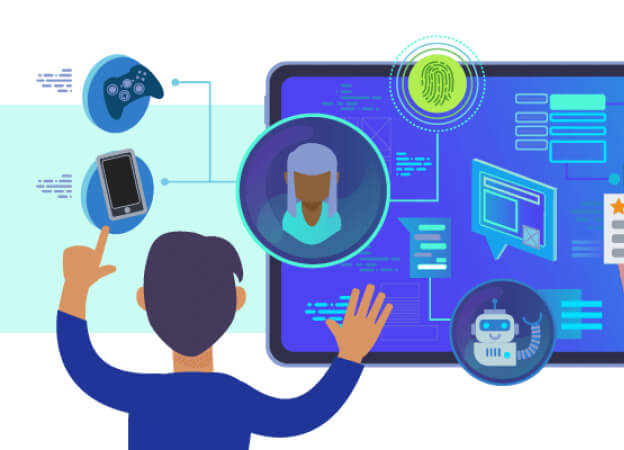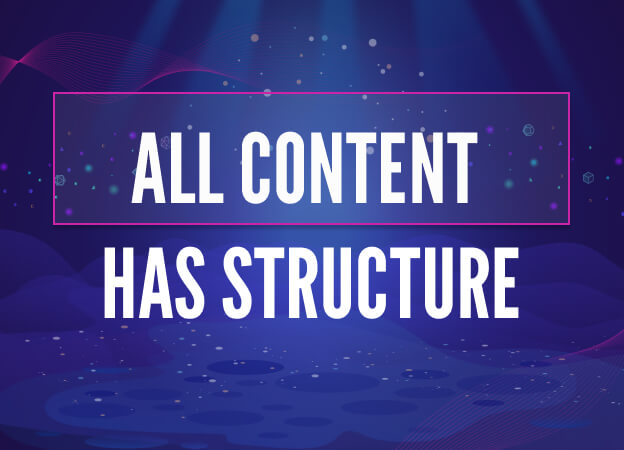Don't build or buy an enterprise chatbot without a content model. Learn how to maximize the ROI of chatbots with structured content you already own.
Businesses and organizations are struggling to create the content chatbots need to deliver exceptional customer experiences and maximize content ROI. What most enterprises don’t realize, however, is that they already have all or most of the content they need in their CMS.
The real question, then, is not where does the content for chatbots come from, but rather how do we prepare, organize and structure that content so the chatbots can use it? The answer is with an enterprise content model. But before we delve into structuring content for chatbots, let’s take a quick look at why enterprise-level organizations with large volumes of content should be looking at chatbots in the first place.
Why Chatbots?
Quite simply, chatbots are the new FAQ. Every second, 40,000 search queries are made online worldwide. That adds up to 3.5 billion per day or 1.2 trillion each year. That’s a lot of people looking for a lot of answers. A recent CEB Gartner study, “Blinded by Delight: Why your customer experience should be effortless not exceptional” has shown that reducing customer effort produces better results than ensuring customer delight. That’s right, the lower the effort required by the customer, the more loyal the customer becomes.
After surveying 92,000 customers, 5000 service reps and 100 companies, the study found that customers are 22 percent more likely to repurchase and increase spend when it is easy to achieve their goals. Inversely, customers required to exert high effort to achieve online goals were 81 times more likely to exhibit negative word of mouth. Businesses and organizations with tons of content on their websites, intranets, and other spaces often already have the answers their audiences need but are unable to surface content preemptively. Those with loyal return customers are aligning and delivering the right information to customers in the key moment and exact context it is needed, thus reducing effort such as multiple interactions with call centers and reliance on traditional FAQs.
It’s estimated that 60.5 million Americans use a virtual assistant at least once a month. If this trend continues, chatbots will likely power 85 percent of all customer service interactions by the year 2020.
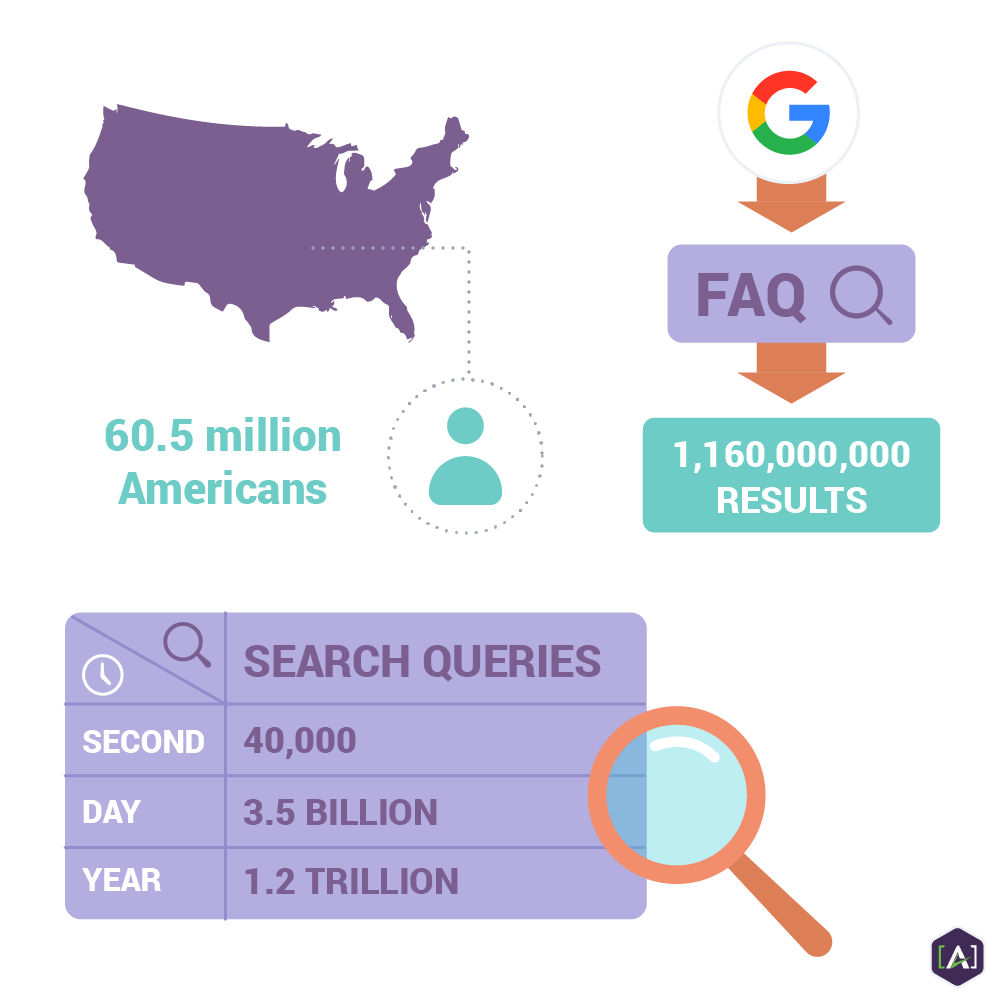
The ROI of Chatbots
Some enterprises are already experiencing amazing results with chatbots. Vodafone’s intelligent chatbot called “Hani” answers 80,000 questions per month and deflects calls from their contact center for 75 percent of their customers. Canadian utility BC Hydro employed a chatbot that nswered more than 720,000 questions in the first 11 months with an accuracy rate of 94 percent.
But the ROI of the chatbot doesn’t just stop with call center savings. In addition to optimizing labor expenses, chatbots can also improve employee productivity and morale. By drawing on existing content, chatbots expand the value of enterprise content through reuse and exposure on interactive channels.
How Chatbots Work
Unfortunately, chatbots aren’t all that bright out of the box. They are not, by themselves, intelligent agents or true AI, nor are they inherently capable of machine learning. A chatbot is a process and not an object. The technology is secondary. We can, however, add intelligence to chatbots in how we build and integrate them.
In order to give chatbots the content they need, we need to understand how chatbots work. These are the main components of chatbots:
- Entities: The “things” we’re talking about with a chatbot
- Intents: The goal of our interaction with a chatbot (Learn to Change Oil)
- Utterances: A subset of intents, these are the unique questions or commands we ask a chatbot and their synonyms. (“How do I do a lube job?” or “Tell me steps to changing my oil”)
- Responses: The answers the chatbot returns to our expressed intents
Without going into too much detail, we can outline where chatbots can get the content they need:
- Entities: Can inherit from taxonomy nodes in a CMS
- Utterances and Responses: Can be mapped as content elements within a content type
- Utterances: Can be defined as primary and alternate questions in a CMS
- Responses: Can be answers defined in a CMS
Let’s take a look at how enterprises can structure the content in their CMS to align with the needs of chatbots.
Structuring Content for Chatbots
The information for the entities, intents and responses mentioned above needs to come from somewhere. Unfortunately, many businesses and organizations are stuck with the tedious task of recreating content or copying and pasting content from their CMS into a form that chatbots can use.
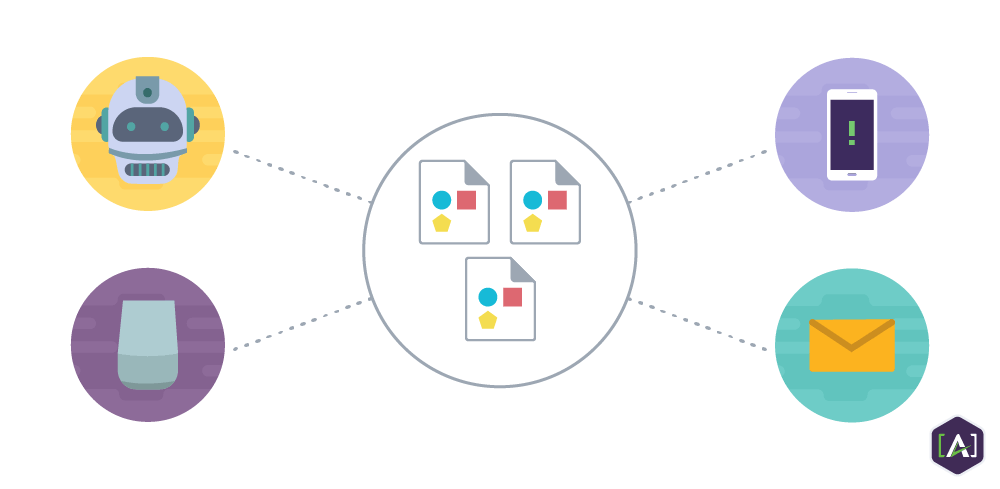
By breaking existing content into smaller, modular chunks within our CMS, content producers can achieve the holy grail of create once and publish everywhere (COPE). Not only does housing flexible content in one place allow for easy, scalable delivery, it also makes content:
- Structured and consistent
- Internally and externally discoverable
- Customizable and personalizable
- Reusable and automated
Enterprise leadership needs a chatbot strategy that connects with existing content assets. The best way to approach this strategy is with a Core Content Model™ (CCM).
What Is a Core Content Model™(CCM)?
What does it look like and why is it important? The CCM is a single model that defines how all content assets will be structured throughout the complete content lifecycle. An CCM is a system of content types, structures and relationships that form the basis for all content creation, management and publishing. The CCM structures all content assets to help them move easily across all published products. It also enables content asset reuse across tools and products, reducing redundant “cut and paste” efforts.
Building an CCM involves doing an inventory of an enterprise’s content and determining the right structure that will allow the content to be broken up and reused. This structure will not only apply to existing content, but is a template for all future content produced.
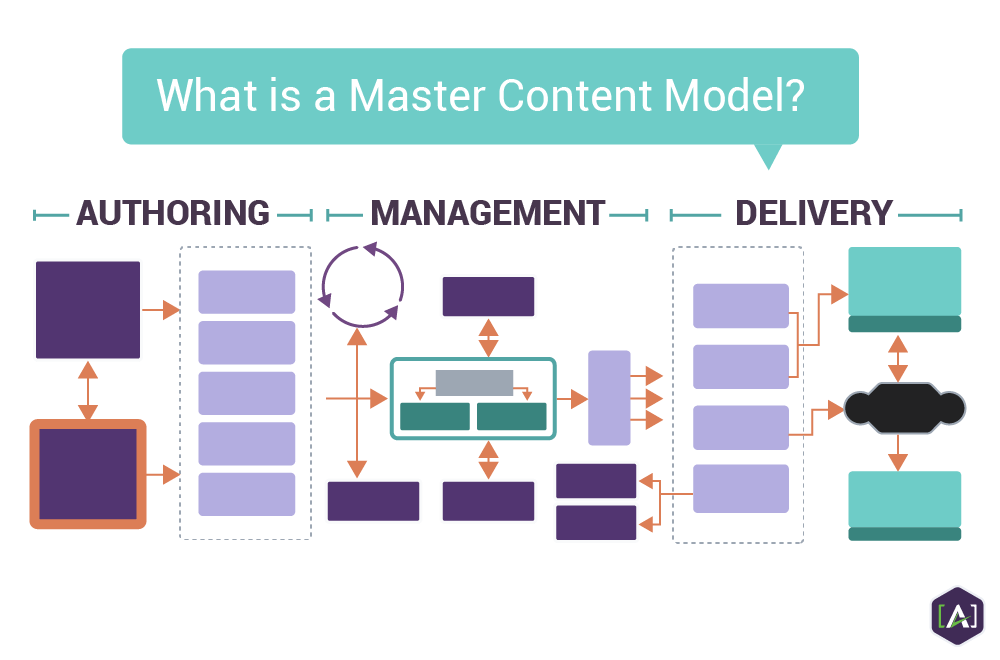
With an CCM, we can associate any piece of content in an enterprise’s CMS that’s considered an article with a content “type” we’ll call “Article.” Within those types, content can be broken up into distinct and purposeful elements. The elements of the content type Article may include cover image, headline, subhead, body, pull quote, and author.
A bot can become “smarter” as there is more long-form content to source from. Instead of creating brand new content, we can tap into the same content and input relevant chunks into the chatbot elements within the same article type. If we want variants for answers, we can simply create or label similar content with the “Article” types so the chatbots can use it as synonyms. With the right structure and taxonomy, every piece of content in an enterprise’s CMS or other repositories can feed our chatbots.
Taking the Next Step
Now that we’ve established value of chatbots, the content ROI they bring, and the importance of structuring the content in a CMS so chatbots can use it, we’re ready to begin building a Core Content Model™.
-
The [A] Guide to Unlocking the Chatbot Inside Your CMS is a two-part whitepaper on single-sourcing content for new interactive channels, including chatbots. It covers how to deliver content for chatbots and new interactive channels using the CMS you already maintain, and walks you step-by-step through the process of syncing, linking, marrying and integrating chatbot content with your CMS.
-
[A] has workshops available for organizations looking to build an intelligent content system, including a methodology for building a Core Content Model™. Contact [A] today to schedule a workshop.



